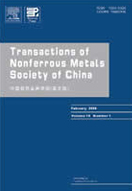Photoelectrocatalytic properties and reactivity of Ti/Au-TiO2 mesh electrodes
(1. Guangzhou Institute of Energy Conversion, Chinese Academy of Sciences, Guangzhou 510070, China;
2. Guangdong Key Laboratory of Agricultural Environment
Pollution Integrated Control,
Guangdong Institute of Eco-Environment and Soil Science, Guangzhou 510650, China;
3. Department of Civil and Structural Engineering, Hong Kong Polytechnic University,
Kowloon, Hong Kong, China)
2. Guangdong Key Laboratory of Agricultural Environment
Pollution Integrated Control,
Guangdong Institute of Eco-Environment and Soil Science, Guangzhou 510650, China;
3. Department of Civil and Structural Engineering, Hong Kong Polytechnic University,
Kowloon, Hong Kong, China)
Abstract: A kind of photoelectrode was innovated by anodising titanium mesh in H2SO4 solution and photo-reduced in HAuCl4 solution and named Ti/Au-TiO2 mesh electrode. The structural and surface morphology of the Ti/Au-TiO2 mesh was examined by X-ray diffraction, laser Raman spectra, scanning electronic microscopy(SEM) and X-ray photoelectron spectroscopy respectively. The results indicate that its crystal structure, morphology and the size of pore are affected greatly by gold deposition. XPS measurement shows that the valence band of Ti/TiO2 has two peaks: a wide one at 4.97eV and a narrow one at 6.61eV, which correspond mainly to π(nonbonding) and σ(bonding) O.2p orbitals. The emission intensity of O 2p orbitals becomes stronger and the width of the valence band increases with the increase of Au content. And the emission of nonbonding shifts toward lower binding energy and that of bonding O 2p orbitals shifts toward higher binding energy. The photoelectrocatalytic(PEC) oxidation of humic acid(HA) was investigated in terms of TOC. The PEC oxidation efficiency of Ti/Au-TiO2 mesh with optimal content of gold is higher than that of Ti/TiO2 mesh. It is suggested that the recombination of electrons and holes is hindered owing to gold deposition. The investigation shows that PEC oxidation is a convenient way to mineralize organic matter for water treatment.
Key words: photoelectrocatalytic oxidation; water treatment; humic acid; mesh electrode; gold

